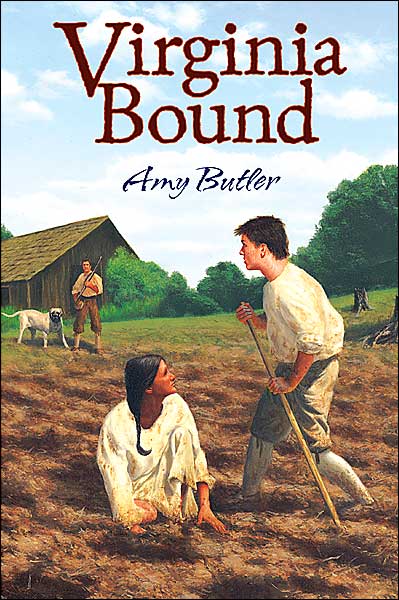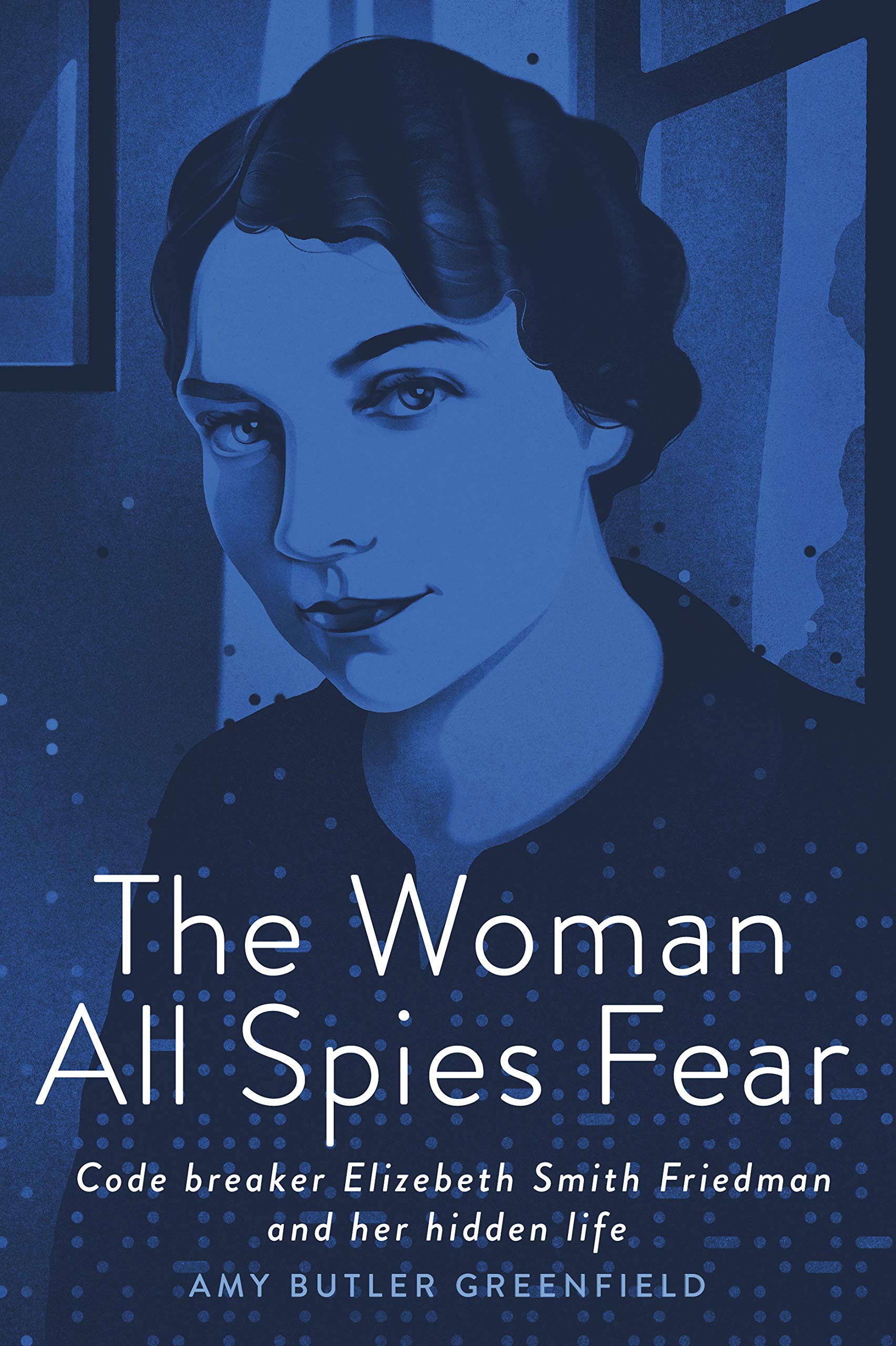A Teacher's Guide to Virginia Bound


Author's Note: This guide is divided into three parts: (1) activities across the curriculum; (2) in-depth questions about the themes of survival, trust, and friendship; and (3) brief chapter-by-chapter questions for classroom discussion.
I hope this guide will help you and your students get the most out of Virginia Bound. To learn more about the facts behind the fiction, you may wish to read an interview about the research and writing of the novel. The author’s note at the end of Virginia Bound also helps put the book into historical context.
If you use Virginia Bound in your classroom, or if you have other suggestions for classroom activities, I'd be delighted to hear from you.
ACTIVITIES ACROSS THE CURRICULUM

Language Arts
(1) The first page of Virginia Bound reveals that the book begins in 1627. What other clues in the first chapter tell you that the story takes place long ago?
(2) Virginia Bound is told in third person, from Rob Brackett's point-of-view. What would the story be like if it were told by Rob in first person? What would it be like it it were told by Mattoume? Pick a scene from the novel and rewrite it from the point-of-view of a different character.
Social Studies
(1) Find these places on a map: London, River Thames, Atlantic Ocean, Jamestown, James River, Virginia.
(2) Good historical fiction relies on good historical research. Pick a scene from Virginia Bound and make a list of all the details the author had to know in order to write the scene. Where do you think you might be able to find this information?
(To see some fascinating examples of maps, letters, court records, and census data from early Virginia, visit the Virtual Jamestown website.)
(3) Archaeological digs are an important source of information about colonial Virginia. Make a list of the kind of artifacts that might have been used in Jamestown in the early 1600s. Which ones might have survived underground for 400 years? Which ones wouldn't? Compare your answers with the results of the archaeologists involved in the Jamestown Rediscovery Project.
Teachers may also wish to visit this history.org website. It provides more information about archaeology and suggests related classroom activities.
(4) The Pamunkeys and the Accomacks are two of the Indian tribes living in Virginia in the early seventeenth century. Research what other tribes also lived there. What was a typical day like for a Pamunkey boy or girl in the early 1600s?
(Recommended resources include Native Americans: Portrait of the Peoples, edited by Duane Champagne; North American Survival Skills by Karen Liptak; and Houses of Bark by Bonnie Shemie. Online, you may wish to consult the Virginia's First People, Past and Present website and Virtual Jamestown's John White drawings. These late 16th-century portraits are of Roanoke-area Indians, who shared some ways of life with the Indians of the Chesapeake further north.)
(5) This website includes a selection of original documents about life in early Virginia. One document contains a long list of all the types of workers needed in the English colony. What kind of work does each worker do? (A cooper, for example, makes barrels, casks, and pails.) Why do you think that the colony needed these particular workers? What does the list tell you about the colony's plans?
Art
(1) Draw a map of Rob's travels.
(2) Draw a place or person described in Virginia Bound.
(3) Make a collage of all the things you think are necessary for your survival.
(4) Craftsmanship is an important part of art. How does Rob learn his craft? How do woodworkers learn their craft now? How do other artists and craftspeople receive their training? Why is training important?
(Two good resources for researching carpentry and woodcraft are Eric Sloane's A Reverence for Wood and C. Keith Wilbur's Home Building and Woodworking in Colonial America.)
Science
(1) List all the wild animals are mentioned in Virginia Bound. Research what other wild animals were in early Virginia. Divide into groups and research each animal separately. What does it look like? What does it eat? What is its normal habitat? Can it still be found in present-day Virginia? Write a report.
(2) One of the many illnesses that plagued the English settlers in Virginia was malaria, a mosquito-born disease. Research malaria and the life cycle of the mosquito and draw a diagram of how the disease spreads. Why was malaria a problem in Jamestown and nearby settlements? Were is malaria still common, and why is it still a problem today? Can malaria be cured? Can it be prevented?
An excellent, kid-friendly web resource on malaria can be found at NPR’s Science Friday Kids Connection website.
(3) European settlers introduced many new plant and animal species into the New World. What plants and animals mentioned in Virginia Bound are native to Virginia? Which ones were introduced?
(For more information about introduced species and the New World, teachers may wish to consult Herman J. Viola and Carolyn Margolis's Seeds of Change; Alfred Crosby's Ecological Imperialism; and Timothy Silver's A New Face on the Countryside.
(4) To reach Virginia, the crew of the Sparrow needed to use celestial navigation. Mattoume also plans to find her family using the stars. Research celestial navigation. What other ways did people have of finding their way in long ago times?
(Recommended resources include the Celestial Navigation Net and the Native American Astronomy webpage.)
EXPLORING THEMES

Survival
Rob, Nell, and Mattoume must all learn to survive in the harsh world of English Virginia. What threats do they face? How do they cope with them? What skills help them survive? Do you think any of them could have survived on their own?
All people need certain things, such as food and shelter, to survive. But different cultures meet those needs in different ways. What did the English colonists believe was necessary for survival? What did the Powhatans believe was necessary? How did their needs come into conflict?
What things do you believe you need to survive?
Trust
At the beginning of the book, Rob tells Nell, "Look out for yourself, that's what I say. And don't trust no one." Find points in the story where Rob refuses to trust someone. Is he right not to trust that person, or wrong? How do his prejudices influence his decisions about whom he trusts? Does he ever change his mind? If so, why?
Can you describe a time when you learned to trust someone? Are there people you shouldn't trust? How can you earn someone else's trust?
Friendship
When do Rob and Mattoume become friends? Why? Can you find passages in the book that show friendship developing?
Sometimes friends can accomplish things together that they could not accomplish on their own. How does Mattoume help Rob? How does Rob help Mattoume? Have you ever cooperated with a friend to do something you couldn't have done by yourself?
QUESTIONS FOR CLASSROOM DISCUSSION:

Chapters 1-3
(1) What does Rob want to be? What obstacles stand in his way? What does Nell want?
(2) Why doesn't Rob trust Larkin?
(3) What does Rob believe about Virginia? What does Nell believe? Who do you think is right?
Chapters 4-6
(1) Describe Jamestown in 1627.
(2) Why does Captain Holt buy Rob?
(3) Why did Holt and Fanshawe come to Virginia? What crop are they planning to grow?
(4) At the end of Chapter 6, Rob doesn't know what has happened to Nell. What do you think has happened to her?
Chapters 7-10
(1) The Indian girl reminds Rob of someone. Who?
(2) How do Virginian masters treat their servants?
(3) List four Pamunkey words. What do they mean?
(4) Do you think Rob will accept Mattoume's offer? Do you think he should? Why or why not?
Chapters 11-15
(1) How do Rob and Mattoume plan to escape? What stops them?
(2) Why does Holt bring Rob to Jamestown?
(3) What is Parr's Hundred? Can you describe it?
(4) Why doesn't Rob tell the Stantons and their friends about his friendship with Mattoume?
(5) What advice does Stanton give Rob? Do you agree with it? Why or why not?
Chapters 16-20
(1) Why does Rob want to stay in English Virginia? What promise is he worried about breaking? Does he break it?
(2) How do you think Mattoume would describe Rob?
(3) Why does Rob tell Stanton about Mattoume?
(4) What do you think happens to Mattoume after the book ends? What do you think happens to Rob?


